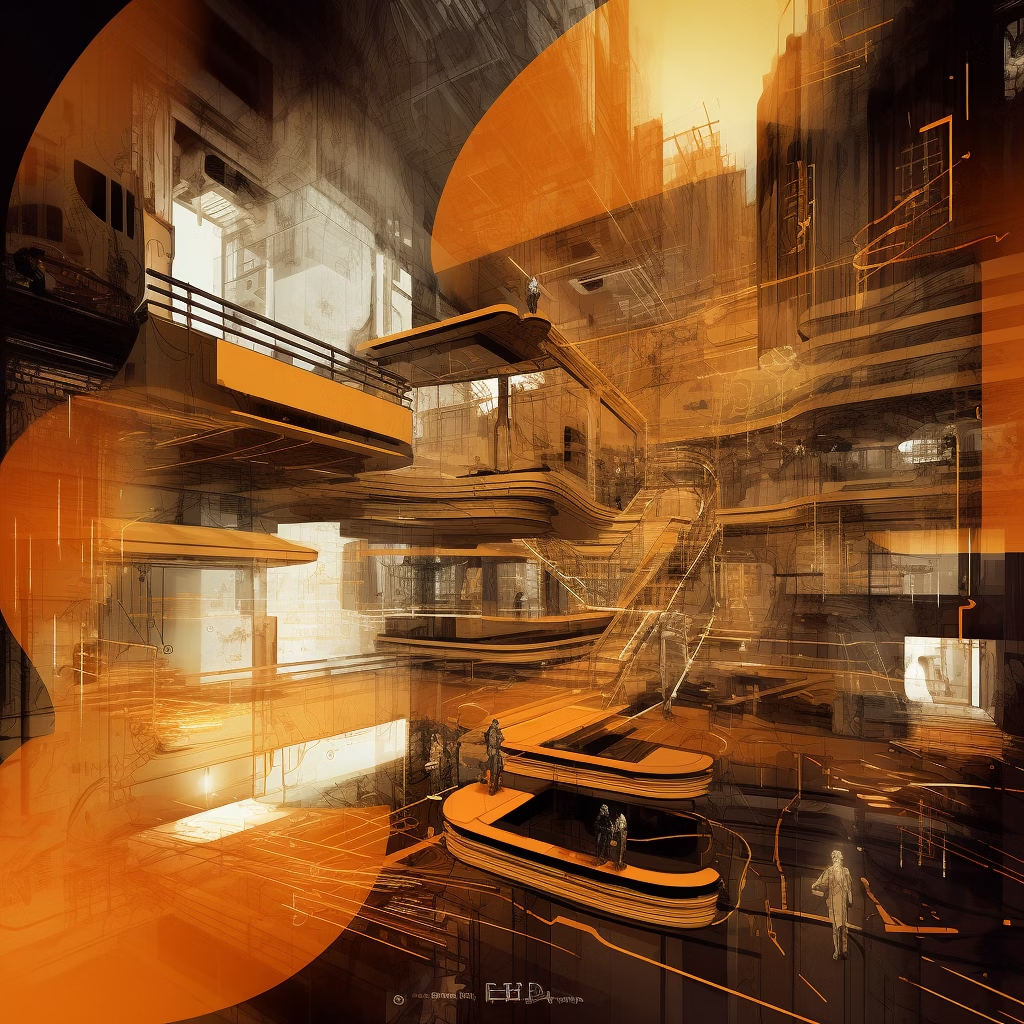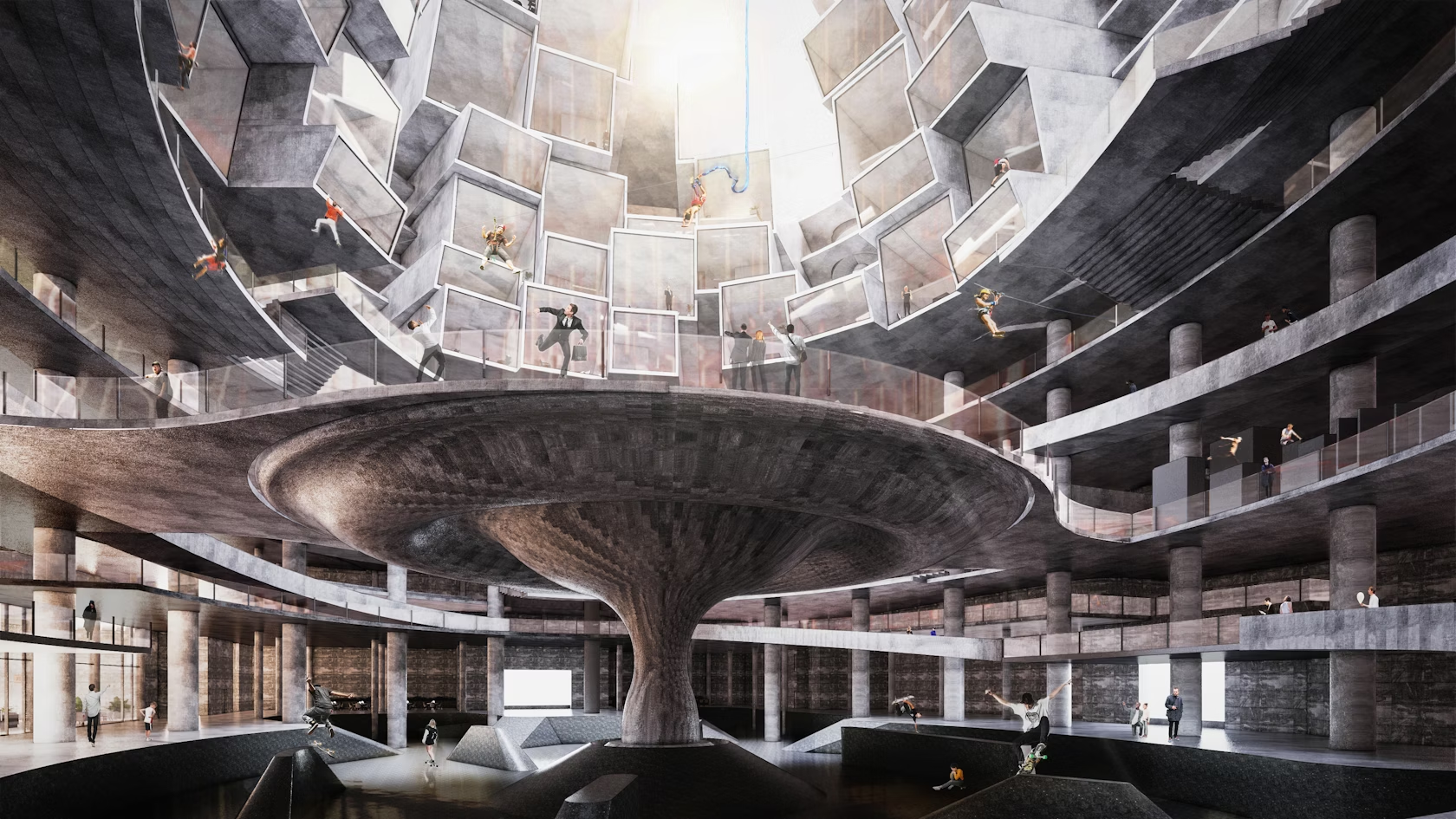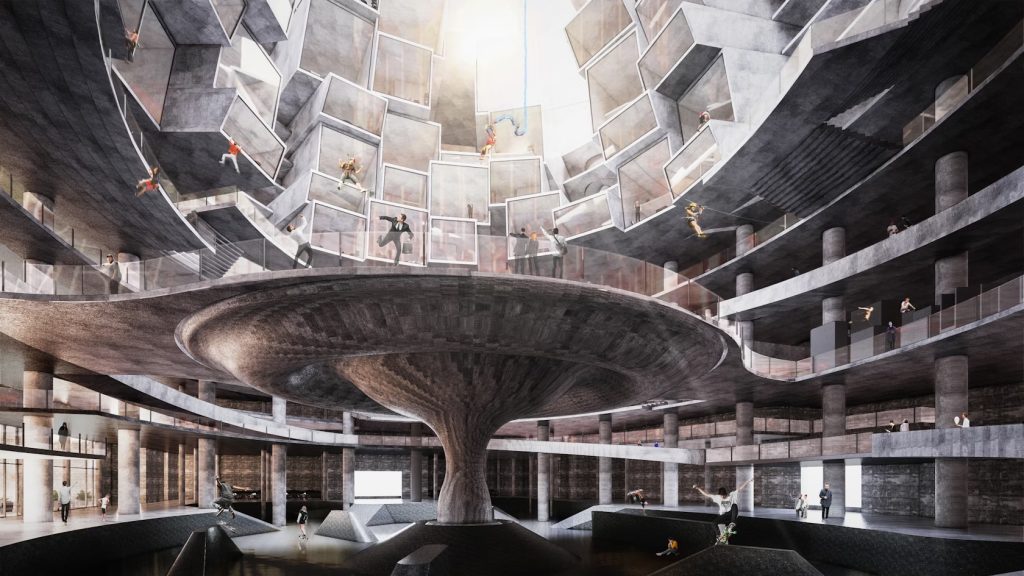Got a project that’s too bold to build? Submit your conceptual works, images and ideas for global recognition and print publication in the 2025 Vision Awards! Take advantage of our Early Entry discount and start your entry today.
Learn More About Vision Awards
Architectural renders have always told a story. For a long time, that story was about certainty. They arrived late in the process after the big decisions had been made, as glossy proof that a design was worth building. Materials were fixed, sunlight was flattering, while the make-believe people wandered through perfectly landscaped lobbies, coffee in hand. Everyone understood the deal: this wasn’t how the building would really look, but it was an impression of how it should feel.
However, this is no longer the function of a rendered image in practice. Visualization has moved upstream. The software is faster and much more powerful. The tools are embedded, and architects are now rendering as they design. Not to pitch, but to test. Not to persuade, but to explore. And the renders being produced — rough, speculative, sometimes contradictory — are proving way more useful than the final marketing shot ever was.
Te Arai | Dune House by Dawid Wisniewski | Professional Winner, 2023 Vision Awards, Photorealistic Visualization
Ask any architect working in a mid-size practice, and they’ll tell you: “Rendering now happens on the fly.” Whether it’s Enscape, Twinmotion, D5 or any of the many tools available, live visuals are generated not at the end of a project but in the middle of discussions, quickly replacing the sketch as the tool for testing ideas. Lighting conditions are toggled, cladding is adjusted, and foliage is dialed in and out at will. The model is not only drawn. It’s lit, framed and evaluated in form from all angles, perhaps in three dimensions, in real time, and in front of the client. Architects are no longer drawing a line to describe a section. They’re adjusting the sun path to see if a proposed terrace makes sense after 4pm.
This has changed how big decisions are being made in studios. If the visual no longer represents a fully fledged idea, it becomes part of the negotiation. Design teams are using visuals to weigh up unresolved questions: how heavy a structure should feel, where to thicken a parapet, whether a scheme reads better with a void or a bridge. It’s become an opportunity for play and discovery by leaving space for ambiguity, debate, correction, and, most importantly, new thinking without fear.

The Radiant Nexus: A Dynamic Oasis of Modern Architecture by HB Architects
When the pace at which you can test things out is at the click of a button rather than hours of processing, when you don’t need to pick just one position to view your ideas from, but you can freely move around them, the opportunity for imagination increases exponentially. Real-time rendering gives architects and designers the ability to prove that their ideas work without sacrificing the all-important resource of time. This allows for formal experimentation, unusual choices, speculative layouts, and non-standard solutions. You can push the idea further before someone says it’s too late to go back.
While it might be all fun and games in the studio, this shift in architectural practice has some caveats that need to be considered. Live rendering has an impact on who needs to understand what and when. Consultants, clients and project managers are now looking at images that were typically gate-kept behind the metaphorical closed doors of a visualizer’s filing system, never to see the light of day and certainly not a client’s inbox. Now, though, the architects involved need to explain and rationalize earlier, using renderings as sketches and tools of persuasion in the same breath, which is helpful, until it isn’t. Because an image, once shown, can very easily take on a life of its own.
The risk with fast visualization isn’t inaccuracy; it’s false certainty. A rendered moment can easily be read as complete when it’s anything but. Once that moment is circulated, it becomes harder to walk back. The railing is there, even if it hasn’t been dimensioned. The overhang is shadowing just so, even if it doesn’t quite resolve structurally yet.
This creates pressure, not necessarily to get it right, but to make it look right. In these instances, visual coherence can override spatial coherence. A rendered image can smooth over unresolved elements, and once it’s in front of a client, attached to an email, or uploaded to a server, it begins to anchor expectations. The building now has an identity, even if the technical drawings are still weeks behind.

The Rhapsody by Seong Hyun Leem
This isn’t an argument against real-time rendering but a warning against positioning or perceiving images as outcomes rather than tools. The value of real-time visualization lies in its ability to provoke feedback and generate clarity, but that only works if everyone understands that the image is provisional. That requires discipline from architects and some image literacy from everyone else.
The most interesting shift isn’t technical. It’s cultural. Visualization is now fundamental to how architecture is designed, but we haven’t quite figured out how to talk about it yet or where to put it to be most useful.
A visual that helps clarify massing. A modeled interior that reveals a plan flaw. A quick render that tips the conversation from one option to another. These aren’t illustrations. They’re working documents. As such, they rarely appear in portfolios, case studies, or even internal reviews. Not because they aren’t useful, but because they aren’t final.
Architecture still prefers outcomes. Finished buildings. Finished drawings. Finished images. The process — speculative, unresolved, iterative — remains largely invisible.

The Floating City by Jingwei Li
That’s why Architizer’s Vision Awards were created. To try to make space for the kind of visual work that’s actually shaping the architecture of the future. Drawings, photographs, animations, renderings and models — not diluted through the lens of marketing but celebrated for their usefulness as part of the exploration.
The tools have changed. The workflow has changed. If the industry wants to progress for the better, it too should change and should stop only looking at the end results.
Got a project that’s too bold to build? Submit your conceptual works, images and ideas for global recognition and print publication in the 2025 Vision Awards! Take advantage of our Early Entry discount and start your entry today.

